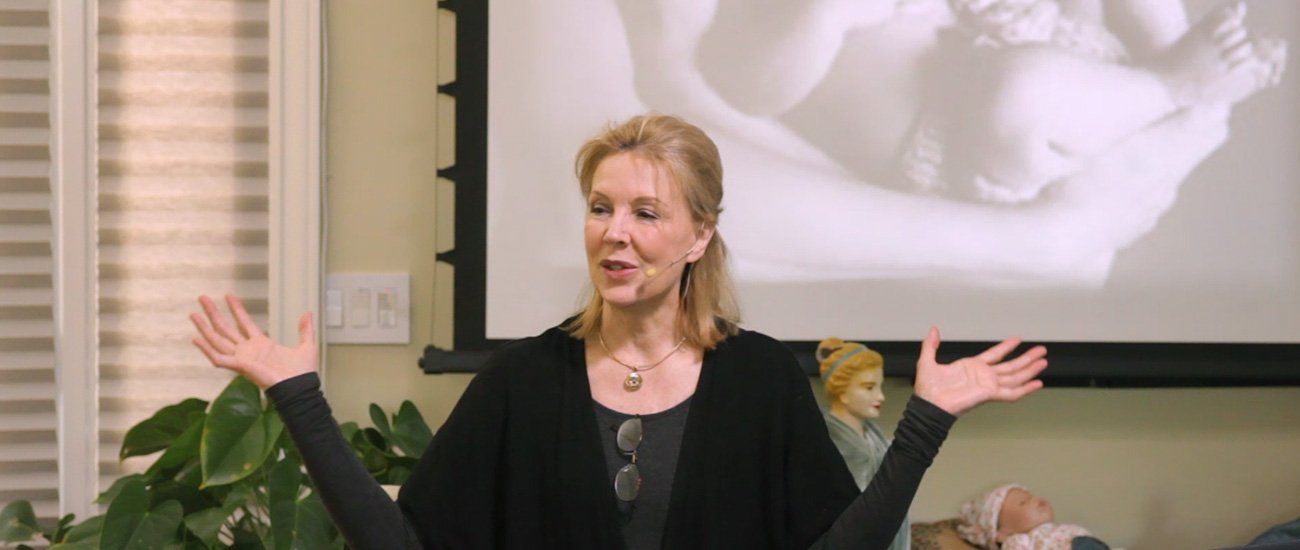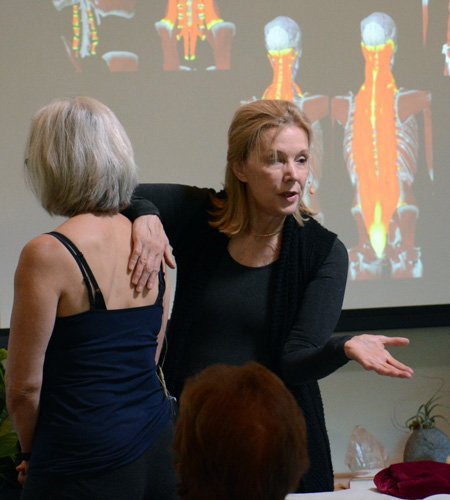NeuroAffective Touch® is a professional somatic training that introduces psychotherapists and bodyworkers to the use of touch as a vital bridge to body-mind integration. By highlighting the primary role of the body and emphasizing its equal importance to the mind, NeuroAffective Touch® (NATouch™) addresses emotional, relational, and developmental deficits that cannot be reached by verbal means alone.
A polyvagal-informed psychobiological approach, NeuroAffective Touch® integrates the key elements of somatic psychotherapy, attachment and developmental theory, psychodynamic psychotherapy, and affective and interpersonal neurobiology.
The training is designed to progressively build psychotherapists’ skill and confidence in integrating body-centered interventions into their psychological clinical practice. It also supports bodyworkers in developing the verbal and psychological skills necessary to assist their clients in connecting their neurobiological states to a conscious narrative.
Learn more about the NeuroAffective Touch® Foundation Training

The body cannot be touched without engaging the mind, and the mind cannot be engaged without affecting the body.
- What does the term “NeuroAffective” mean?
- Is touch in psychotherapy taboo?
- Why is it important to include the body in psychotherapy?
- Why is touch important?
- How is NeuroAffective Touch® different from bodywork?
- How is NeuroAffective Touch® different from psychotherapy?
2. Does NeuroAffective Touch® address developmental trauma?


What does the term “NeuroAffective” mean?
In the early 2000s, I began searching for a term to encompass the complexity of the therapeutic touch I was developing.
Neuro. Touch is a form of nonverbal communication that reaches deep into our inner personal space. Therapeutic touch not only touches the surface of the skin; it also touches thousands of sensory nerve receptors in the joints, muscles, connective tissue, and organs. These sensory receptors are nerve endings that carry information directly to the brain…hence the term “neuro.”
Affective. Touch has a strong emotional impact. During touch work, clients often said: “It’s like you’re touching my emotions.” The nervous system and emotions are deeply intertwined and cannot be separated…hence the term “affective.”
And so, I put the two together and coined the term neuroaffective.
In 2003, in an article titled From Felt Sense to Felt Self I first published a description of NeuroAffective Touch® that described the combined neuromechanics and emotional effect of this type of therapeutic touch.
Is touch in psychotherapy taboo?
The taboo imposed on touching clients in psychotherapy has no legal basis. It is a prohibition established in times long past, a taboo that is currently being reevaluated in light of growing scientific research. The incorrect belief that using touch in psychotherapy is illegal obstructs its acceptance as a valuable psychotherapeutic approach and interferes with the restorative healing potential that therapeutic touch offers.
Neuroscience gives solid evidence of the critical role of the body in cognitive and emotional development. There is now reliable research indicating that attuned touch is critically important for normal brain maturation and for socio-emotional and cognitive development. Touch has proven particularly important in helping to repair unfulfilled preverbal needs.
NeuroAffective Touch® is a way to communicate through sensation that engages the language of the body at a level where we all have received our first imprints. NeuroAffective Touch® therapists begin by addressing the three essential states necessary for secure attachment and the healthy foundation of self: “I exist,” “I am loved,” and “My needs are important.”
By addressing what to do when there are no words, when words are not enough, or when words get in the way, NeuroAffective Touch® transcends the limitations of talk therapy for healing early relational wounds.
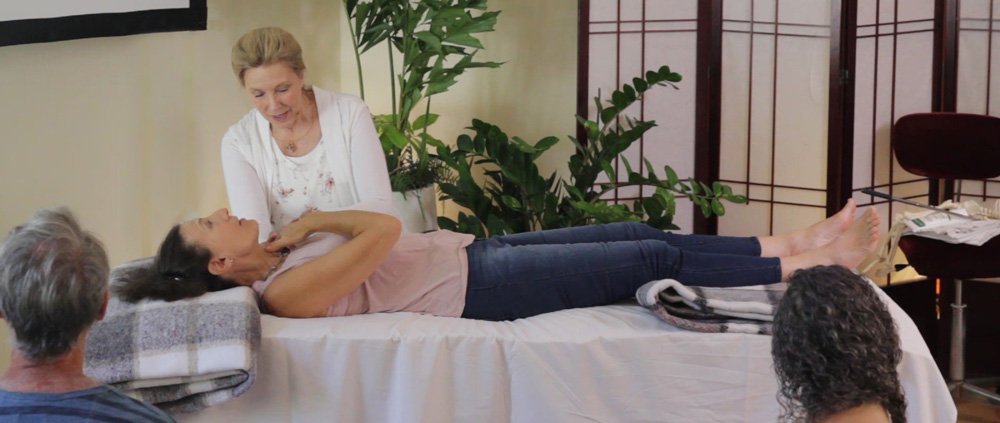


Why is it important to include the body in psychotherapy?
The body cannot be touched without engaging the mind, and the mind cannot be engaged without affecting the body. Continuous loops of information travel bottom up from the body to the brain-mind, and top down from the brain-mind to the body. An important focus in NeuroAffective Touch® is the support of this bidirectional flow of information.
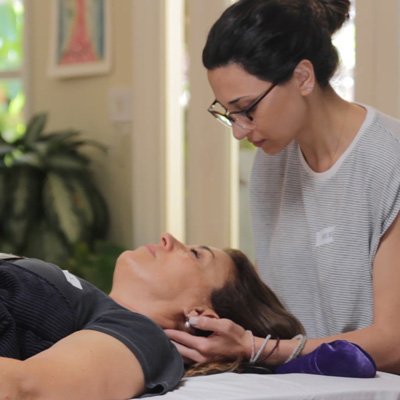

Bottom up. The term bottom up refers to how what happens in the body affects the brain-mind. Bottom-up bodily processes are involuntary and unconscious.
By connecting directly with the body’s bottom-up, nonverbal sensations and emotions, NeuroAffective Touch® speaks directly to the body in its own language.
Top down. The term top down refers to how the brain responds to the information it receives from the body, and the behavior generated based on that information. Top-down responses are voluntary and conscious.
Bottom-up bodily processes and top-down brain-mind mental processes form a whole. One is incomplete without the other. The lack of reciprocity can be likened to a relationship in which only one partner participates.
Rather than privilege top-down processes as does psychotherapy, NeuroAffective Touch® invites the mind and body to participate as active partners in the mind-body information loop. By highlighting the importance of the body and emphasizing its equal importance to the mind, NATouch™ invites a conscious collaborative dialogue between body and mind.
Why is touch important in therapy?
Statistics show that before the importance of touch was understood, one-third of infants in orphanages died because of lack of touch, and half of the rest suffered from mental illness*. In the weeks following birth, an infant must be touched frequently and in a nurturing way in order to thrive.
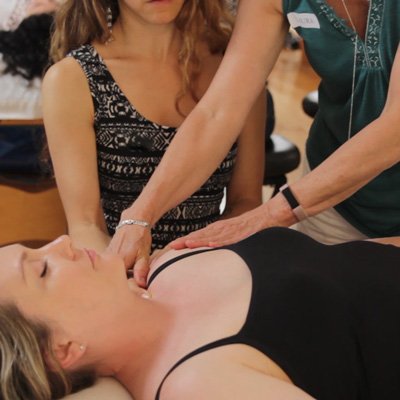

There is now documented evidence for the critical role of touch in human psychology and biology. Research conducted by Tiffany Field, director of the Touch Research Institute at the University of Miami School of Medicine, shows that touch is at the foundation of relational experience. It is a fundamental mode of interaction in the infant–caregiver relationship. Loving, respectful touch is essential to healthy growth, and vital to the process of integrated wholistic development.
NeuroAffective Touch® addresses early touch deficits by communicating directly with the body to nurture clients at the nonverbal level where they received their first imprints.
Touch, neglect, and abuse
Studies on the causes of mental health problems suggest that some form of touch abuse or neglect is at their root. It is a known fact that parents who neglect, molest, or beat their children were themselves, as children, touched in traumatizing ways.
Many psychotherapeutic models postulate that touch is contraindicated when abusive touch was a component of the trauma. However, experience shows that gentle, supportive, and nurturing touch offers a profoundly restorative experience that brings back hope to a body in despair that has never experienced respectful healing touch.
*Perry, B. & Szalavitz M. (2010) Born for Love. New York; HarperCollins.
How is NeuroAffective Touch® different from bodywork?
The term bodywork refers to hands-on techniques that address relaxation, body posture, and function. Bodyworkers learn to deliberately manipulate the body in order to obtain physical benefits. However, bodyworkers are not trained to address the emotional responses and cognitive issues that accompany their physical manipulations.
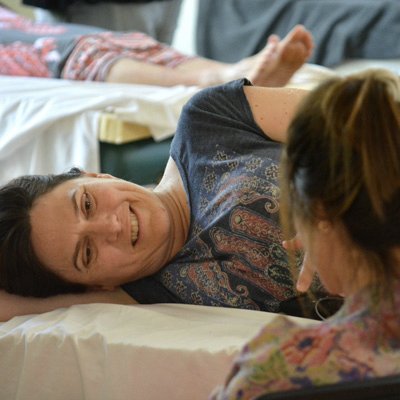

NeuroAffective Touch® invites the mind to collaborate as an active partner while engaging the body on its own terms, at the deepest biological level. By paying attention to specific layers of the body — skin, connective tissue, muscle, nervous system, organs — and by following existing rhythms and lines of force, a therapist trained in NATouch™ attunes to and assists clients in becoming consciously present to their neuroception. This teaches the mind and body to develop a conscious, compassionate relationship.
The therapeutic use of bottom-up touch and bodywork in conjunction with a top-down invitation to the cognitive self to participate helps clients understand how their thoughts, emotions, and body function collaboratively as one organism.
By combining a hands-on neurobiological regulating contact, together with a caring relational presence, NeuroAffective Touch® therapists bring a special focus to working with childhood emotional and relational trauma. The therapeutic resonance established within the therapist-client dyad offers a new relational imprint that brings hope to the work of repairing developmental breaches and attachment ruptures that underlie much of life’s suffering.
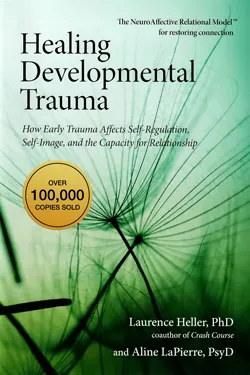


Does NeuroAffective Touch® address developmental trauma?
What is developmental trauma?
Developmental trauma is the result of ongoing hurtful parenting that is beyond a child’s control. Naturally open-hearted, innocent children are unprepared for physical abuse, emotional betrayal, and relational neglect.


Developmental trauma disrupts normal identity formation because it forces children to focus their energies on shoring up their survival skills.
In survival mode, fear and vigilance take over the resources ordinarily allocated to normal development. Traumatized children adjust their behavior by preparing for the worst. They survive by becoming mistrustful of other human beings and hyperalert to cues of emotional and relational danger.
Adults who grew up in misattuned or hostile families often don’t realize that their struggles with anxiety, lack of confidence, shame, self-hatred, depression, anger, violent behavior, and failed relationships are the outcome of the physical, emotional, and relational stress and trauma experienced within their families.
Research in affective and interpersonal neuroscience shows that emotional and cognitive distress in childhood can shift the trajectory of brain development and undermine the stability of the nervous and endocrine systems. The brain circuitry of children who experience emotional and relational trauma predisposes them to hypervigilance, mistrust, and isolation.
What is Complex Post-Traumatic Stress Disorder (C-PTSD)?
Complex post-traumatic stress disorder develops following exposure to threatening or horrific situations that are of a prolonged or repetitive nature and from which escape is difficult or impossible. Examples of such situations are chronic domestic violence and neglect, repeated childhood sexual or physical abuse, torture, slavery, and genocide campaigns.
Complex PTSD has been shown to be more severe in its effects than PTSD. In addition to meeting the diagnostic requirements for PTSD, complex trauma is characterized by:
- Severe and pervasive problems in affect regulation
- Persistent beliefs about oneself as diminished, defeated or worthless, accompanied by deep and pervasive feelings of shame, guilt or failure related to the traumatic event
- Persistent difficulties in sustaining relationships and in feeling close to others
- Significant impairment in personal, family, social, educational, occupational or other important areas of functioning.
How does NeuroAffective Touch® help heal developmental trauma?
NeuroAffective Touch® helps repair developmental trauma by offering clients the fundamental missing nonverbal experiences of connection, support, attunement, and nurturing. Sessions help build an in-the-body, bottom-up connection to physical sensations of trust and comfort that generate new emotional and cognitive options, and foster an enriched top-down life experience.
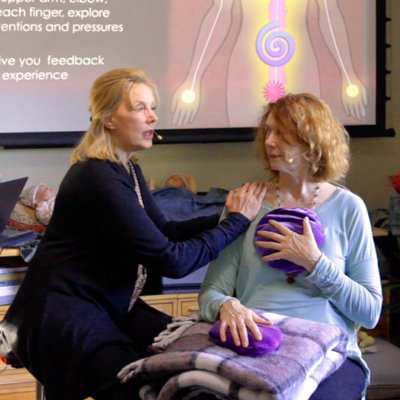

We help clients who suffer from nonverbal or preverbal distress, as reflected in difficulties with:
- Experiencing that they actually exist
- Developing autonomic regulation and soothing themselves
- Trusting relationship
- Identifying and communicating their needs
- Feeling trapped in states of self-judgment, shame, and guilt
NeuroAffective Touch® demystifies the seemingly endless number of emotional and cognitive problems that result from developmental, emotional, and relational distress and trauma.
Without realizing it, many individuals develop adaptive behavior patterns that work against them. NeuroAffective Touch® identifies these dysfunctional patterns and shows how what happens at each stage of development can impair the capacity to connect with self and others, and negatively affect future relationships and life choices.
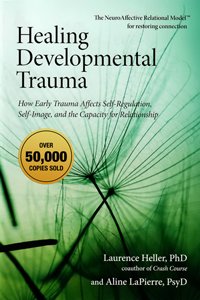

Excerpt from the book Healing Developmental Trauma
This excerpt from Healing Developmental Trauma illustrates how the relational connection offered in NeuroAffective Touch® can be transformative when working with preverbal emotional and relational deficits. Read excerpt from Healing Developmental Trauma >
The NeuroAffective Touch® Institute is neither a regulatory nor licensing organization and therefore cannot certify, license, or otherwise bestow the legal authorization to practice as a mental health or bodywork professional. Please contact your federal, state, or local agencies and/or licensing boards that govern mental health or bodywork professionals in your geographical region for more information.



